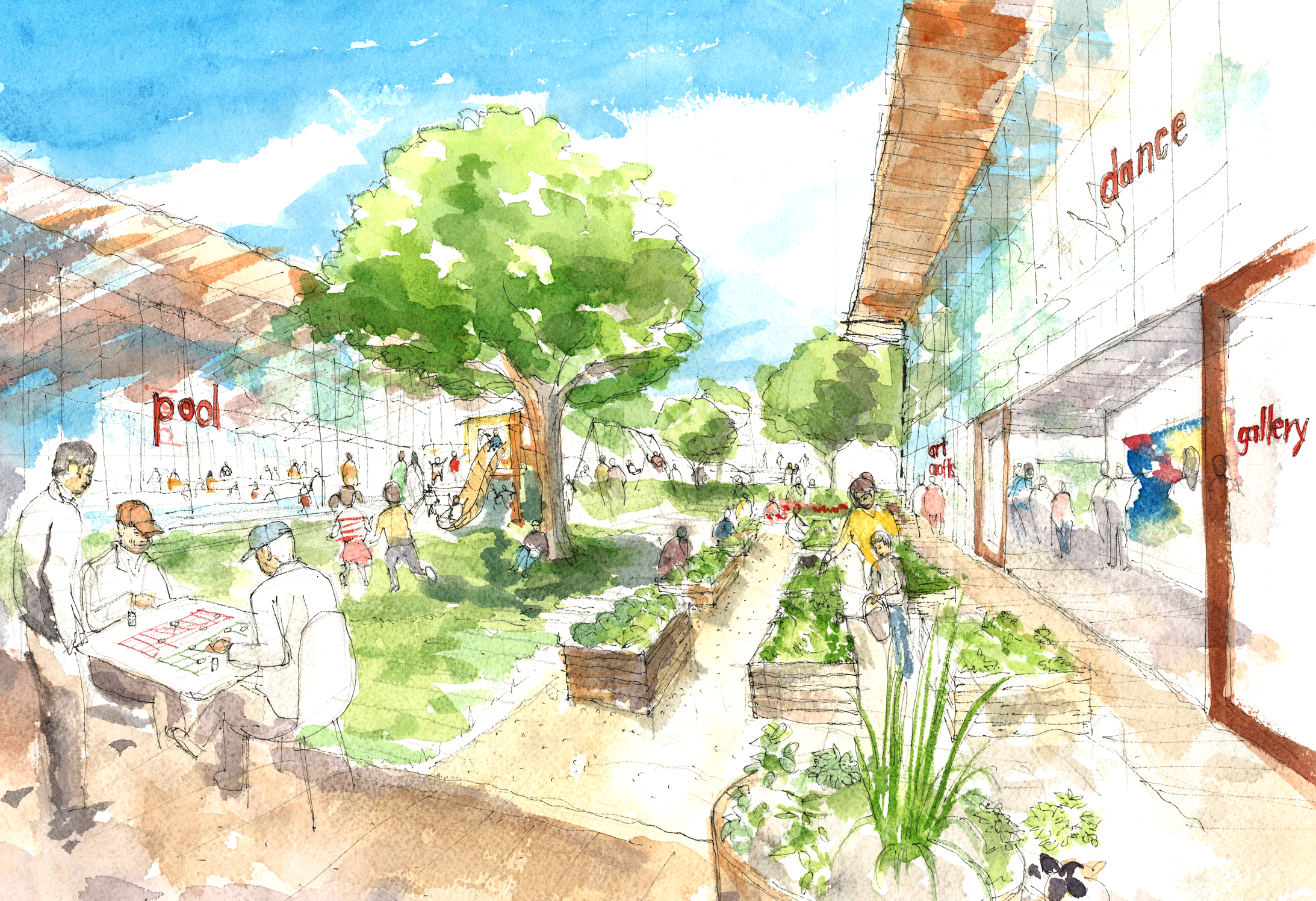
WHAT IS THE JADE DISTRICT?
The Jade District, a program of APANO, has long been defined by the area it covers. It is located in southeast Portland and focuses on improving the ten-block radius surrounding SE 82nd Avenue and SE Division Street. In 2012 this commercial area became a Neighborhood Prosperity Initiative (NPI) part of a new system of urban revitalization by Prosper Portland (formerly Portland Development Commission) through the Neighborhood Prosperity Network (NPN). It was selected based on a large concentration of culturally specific businesses, diversity in residents, and historic underinvestment.
It was named the Jade District while under the management of the 82nd Avenue of Roses Business Association. In 2013 it became a program of APANO (an API-focused nonprofit). The program experienced an initial investment when APANO took over and pursued several community-based projects.
Source: Program Archives
What are Neighborhood Prosperity Initiatives (NPIs) and the Neighborhood Prosperity Network (NPN)?
Neighborhood Prosperity Initiatives (NPIs) are part of the Neighborhood Prosperity Network (NPN). The NPN is a Prosper Portland initiative designed to support social equity-based community economic development at the neighborhood level. The Network is a citywide initiative to foster economic opportunity and vitality throughout Portland neighborhoods, with a focus on low-income populations and communities of color.
Source: Esri
Through grants, training, and support from Prosper Portland, each Network organization is responsible for planning and implementing projects to improve the local commercial district. There are currently seven NPI districts: Cully Boulevard Alliance, Division Midway Alliance, Historic Parkrose, Jade District, Our 42nd Avenue, Rosewood Initiative, and St. John's Center for Opportunity.
The original intent was focused on enhancing the vitality of the business district, consistent with the following community-developed vision statement:
By 2025, the 82nd Avenue and Division NPI District is a safe business district where a cohesive business community welcomes residents and visitors to experience the rich tapestry of cultural heritages in a must-see destination location. This multi-cultural district is recognized with distinctive color, style, and activities, and will be a vibrant economic district supporting the needs of its residents. The district features safe, walkable areas rich with many different cultural establishments serving food & drink, arts, entertainment, and gathering places that foster a sense of ethnic diversity. The 82nd Avenue and Division NPI District is identified as a distinct regional cultural district using consistent signage, lighting, calming traffic, physical improvements, and signature events focusing on our many different cultures.
Source: Visioning Process (2014)
The program defines its constituency as businesses and residents who are culturally specific, immigrant, or limited English proficient who are property cost-burdened or at high risk of displacement due to neighborhood changes. In 2015, according to the Multicultural Collaborative, the neighborhood is home to many immigrants and refugees representing over 140 languages.
Through interviews and an intensive Visioning Process in 2014, the community has been remarkably consistent in its feedback over the years. Needs have continued to center around safety, improving infrastructure, and creating common spaces. Below you can see a video produced by Portland Metro in 2015 called At the Corner of Change it provides a brief introduction to the neighborhood. Read more about neighborhood demographics in the 2020 Prosper Portland NPN report here.
At the Corner of Change by Portland Metro (2015)
Who is involved?
Community Manager: Alisa Kajikawa (alisa.kajikawa@apano.org)
Community Coordinator: Jeremy Hart (jeremy.hart@apano.org)
Jade District Steering Committee:
The Steering Committee is composed of Stakeholders that represent different interests in the neighborhood.




